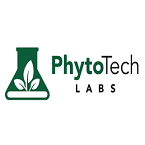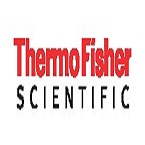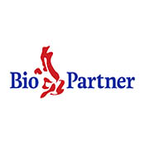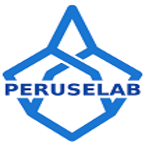About Conference
The 7th International Conference on Physics, scheduled to be held on February 09–10, 2026 in Paris, France, is a prestigious global platform bringing together leading researchers, scholars, physicists, academicians, and industry professionals from around the world. This influential event is designed to promote scientific exchange, present groundbreaking discoveries, and inspire future innovations in the diverse domains of Physics.
Theme: Unveiling the Frontiers of Physics: Pioneering Innovations for Tomorrow’s World
The conference aims to explore transformative ideas, emerging technologies, and advanced research shaping the future landscape of Physics. Through a dynamic program featuring Keynote presentations, Oral sessions, Poster sessions, Workshops, Symposia, Panel discussions, and Exhibitions, participants will gain valuable insights into cutting-edge developments across theoretical, experimental, applied, and quantum physics.
This hybrid forum serves as a unique opportunity for attendees to present research findings, engage in meaningful discussions, and establish global collaborations with experts and organizations dedicated to advancing scientific knowledge. The event encourages interaction, creative thinking, and knowledge transfer among professionals who are passionate about the evolving frontiers of Physics.
Join us in Paris to discover groundbreaking concepts, share ideas, network with visionary thinkers, and contribute to shaping the innovations that will drive tomorrow’s scientific world.
WHY TO ATTEND
The 7th International Conference on Physics, taking place on February 09–10, 2026 in Paris, France, offers an exceptional opportunity for physicists, researchers, academicians, and industry professionals to engage with cutting-edge advancements shaping the future of physics. Attending this conference provides a platform to explore breakthrough discoveries, innovative technologies, and transformative research aligned with the theme “Unveiling the Frontiers of Physics: Pioneering Innovations for Tomorrow’s World.”
-
Learn about cutting-edge research in modern physics.
-
Hear expert Keynote talks from global scientists.
-
Present your work and gain valuable feedback.
-
Connect with international researchers and professionals.
-
Explore innovative technologies and future advancements.
-
Build collaborations for research and career growth.
-
Stay updated with emerging trends in physics.
Target Audience
-
Physicists and Research Scientists
-
University Professors and Academic Experts
-
Students, Scholars, and Early-Career Researchers
-
Laboratory Scientists and Technicians
-
Quantum Technology and Materials Science Researchers
-
Space Science, Astrophysics, and Cosmology Experts
-
Engineers and Applied Physics Professionals
-
Nanotechnology and Photonics Specialists
-
Industry Professionals and Tech Innovators
-
Research Organizations, Institutes, and Laboratories
-
Science Communicators and Policy Makers
Sessions and Tracks
Track 01: Applied Physics
Electromagnetism is one of the four fundamental forces and focuses on the interaction between electric and magnetic fields. Electronics deals with the controlled movement of electrons and includes branches such as analogue electronics, digital electronics, microelectronics, and embedded systems. Applied physics connects fundamental physical principles with real-world applications, influencing areas such as condensed matter, laser science, quantum electronics, optoelectronics, vacuum tunnelling, nondestructive testing, biophysics, accelerator science, semiconductor technologies, and space physics.
-
Accelerator physics
-
Acoustics
-
Atmospheric physics
-
Biophysics
-
Brain–computer interfacing
Track 02: Atomic, Molecular and Optical Physics
Atomic physics studies atoms as individual systems made of electrons and a nucleus, while molecular physics focuses on the physical behaviour of molecules. Optical physics explores the generation, manipulation, and detection of light across the electromagnetic spectrum. These three fields are closely linked through research on emission, absorption, scattering, laser development, spectroscopy, and the interaction of radiation with matter.
-
Atomic nucleus
-
Electromagnetic radiation
-
Optical engineering
-
Quantum optics
-
Optical coherence tomography
Track 03: Astro-Particle Physics and Cosmology
Astro-particle physics explores fundamental particles that originate from cosmic sources, blending principles of particle physics and astronomy. Cosmology studies the origin, structure, and evolution of the Universe. Together, they cover research areas such as high-energy cosmic rays, gamma-ray astronomy, neutrino physics, stellar evolution, galaxy formation, general relativity, and the large-scale structure of the cosmos.
-
Radio astronomy
-
Optical astronomy
-
Infrared astronomy
-
Ultraviolet, X-ray, and gamma-ray astronomy
-
Cosmology
Track 04: Astrophysics
Astrophysics studies celestial objects and cosmic phenomena using principles of physics. The field supports advancements in imaging systems, electronics, computing, communication satellites, solar technologies, and medical imaging. Although astrophysical discoveries may take time to reach daily life, their scientific and technological influence is profound.
-
Dark matter
-
Charged cosmic radiation
-
Gamma-ray astronomy
-
High-energy neutrino astrophysics
-
Low-energy neutrino astrophysics
Track 05: Biophysics
Molecular biophysics investigates the physical principles underlying biological molecules and processes. Researchers study interactions among DNA, RNA, proteins, and cellular pathways to understand structural dynamics, regulatory mechanisms, and physiological responses.
-
Structural biophysics and protein dynamics
-
Systems neuroscience
-
Molecular microscopy and optical probes
-
Cell signalling and cellular physiology
-
Computational biology and genomics
Track 06: Classical and Modern Physics
Classical physics explores matter and energy at observable scales and treats space and time as independent. Modern physics examines extreme conditions and very large or very small systems where relativity and quantum behaviour dominate. Classical mechanics, optics, and thermodynamics differ from modern studies that include relativity, quantum mechanics, and nonlinear dynamics.
-
Classical mechanics
-
Classical electrodynamics
-
Classical thermodynamics
-
Special and general relativity
-
Classical chaos theory and nonlinear dynamics
Track 07: Condensed Matter Physics
Condensed matter physics examines the physical properties of solids and liquids where particles interact collectively. It is closely linked to quantum mechanics and electromagnetism. Research in this field has enabled advances such as semiconductor devices, lasers, nanotechnology, and magnetic materials.
-
Anderson impurity model
-
Colloid vibration current
-
Degenerate semiconductor
-
Dynamic electrophoretic mobility
-
Electric-field screening
Track 08: Electromagnetism and Electronics
Electromagnetism studies the combined behaviour of electric and magnetic fields, which form one of the fundamental interactions of nature. Electronics focuses on controlling electron flow using components and circuits in analogue, digital, microelectronic, and embedded systems.
-
Dipoles and monopoles
-
Strength of magnetic field
-
Permeability, paramagnetism, ferromagnetism, diamagnetism
-
Cause of magnetism
-
Retentivity
-
Inductance
Track 09: High Energy Nuclear Physics
High-energy nuclear physics investigates the behaviour of nuclear matter under extreme conditions by studying collisions and particle interactions at high energies. Research includes nuclear reactions, quark–gluon plasma studies, exotic states of matter, and the creation of heavy elements.
-
Nuclear decay
-
Nuclear fusion
-
Nuclear fission
-
Production of heavy elements
-
Nuclear matter
Track 10: Heavy-Ion Physics
Heavy-ion physics explores interactions involving heavy nuclei at high energies. It contributes to areas such as nuclear power, medical imaging, radiation therapy, materials modification, and archaeological dating. These studies help understand dense matter, quark–gluon plasma, and nuclear reaction mechanisms.
-
High-density matter
-
Ultrarelativistic nuclear collisions
-
Quark–gluon plasma
-
Rapidity and pseudo-rapidity
-
Quark–gluon plasma density
Track 11: Material Physics
Material physics investigates the physical behaviour of materials and applies condensed matter principles to complex multiphase systems. It supports the development of advanced materials used in technology, medicine, and environmental applications.
-
Classical mechanics
-
Thermodynamics and statistical mechanics
-
Electromagnetism and photonics
-
Relativistic mechanics
-
Quantum mechanics, atomic physics, and molecular physics
Track 12: Medical Physics
Medical physics applies physical principles to healthcare and focuses on improving diagnosis and treatment using radiation, imaging systems, and measurement techniques. Research advances areas such as adaptive radiation therapy, diagnostic imaging, and radiation protection.
-
Medical imaging physics
-
Radiation therapeutic physics
-
Nuclear medicine physics
-
Health physics
-
Non-ionizing medical radiation physics
-
Physiological measurement
Track 13: Nanotechnology
Nanotechnology focuses on materials and devices at the nanometre scale. It drives innovation in physics, engineering, biomedical science, computing, transportation, and clean energy. Nanomaterials like carbon nanotubes, graphene, metal alloys, and ceramics enable new functions and applications.
-
Carbon black, carbon nanotubes, graphene
-
Fullerene nanofibres
-
Silica fumes
-
Clay
-
Metal and alloys
-
Ceramics
Track 14: Neutron Scattering
Neutron scattering is a powerful tool for studying atomic-scale structure and dynamics in materials. Neutrons provide deep penetration, magnetic sensitivity, and wavelength properties ideal for analysing matter, enabling discoveries in materials science, chemistry, and condensed matter physics.
-
Elastic neutron scattering
-
Quasielastic and inelastic neutron scattering
-
Spin-echo instruments
-
Diffractometers
-
Monochromators
Track 15: Particle Accelerators
Particle accelerators generate high-energy beams of charged particles for scientific research, medical applications, and industrial uses. Linear accelerators move particles in straight paths, while circular accelerators guide them around closed rings for collisions or fixed-target experiments.
-
Electrodynamic particle accelerators
-
Magnetic induction accelerators
-
Linear accelerators
-
Circular or cyclic RF accelerators
-
Betatrons
Track 16: Plasma Science
Plasma science studies ionized gases and charged particle systems interacting with electric and magnetic fields. Plasma research advances fusion science, space physics, accelerators, materials processing, and clean energy technologies.
-
Dipoles and monopoles
-
Strength of magnetic field
-
Permeability, paramagnetism, ferromagnetism, diamagnetism
-
Cause of magnetism
-
Retentivity
-
Inductance
Track 17: Quantum Science and Technology
Quantum science explores the behaviour of particles at atomic and subatomic scales and supports technologies such as quantum computing, encryption, simulation, and sensing. Quantum systems enhance precision in timekeeping, imaging, and secure communication.
-
Quantum cryptography
-
Quantum simulation
-
Quantum metrology
-
Quantum engineering
-
Quantum sensing
Track 18: Quantum Physics
Quantum physics describes how matter and energy behave at microscopic scales. It interprets wave–particle duality, quantum fields, atomic structure, and the probabilistic nature of quantum measurements.
-
Quantum realm
-
Quantum field theory
-
Quantum information science
-
Quantum mechanics
-
Quantum interference
Track 19: Radiation Protection
Radiation protection establishes principles and technologies to minimize the harmful effects of ionizing radiation. It ensures safety for workers, patients, and the public through shielding, monitoring, optimized exposure control, and risk evaluation.
-
Traditional lead shielding
-
Lead composite shielding
-
Lead-free shielding
-
Radiation therapy
-
Diagnostic imaging
Track 20: Theory of Relativity
The theory of relativity explains how mass, energy, space, and time interact. Matter distorts space-time, and objects follow curved paths determined by this geometry. Special relativity and general relativity transformed modern physics and cosmology.
-
Einstein theory of relativity
-
Relativism
-
Special relativity
-
General relativity
-
Cosmological studies
Market Analysis Report
The global physics-driven technologies market is projected to grow from an estimated USD 1.2 trillion in 2025 to nearly USD 2.8 trillion by 2035, driven by rapid advancements in quantum computing, advanced materials, renewable energy systems, and space science. The quantum technology sector alone is expected to expand from USD 25 billion in 2025 to USD 180 billion by 2035, propelled by major investments in quantum communication, quantum processors, and ultra-secure digital systems. Additionally, the advanced materials market—including nanomaterials, superconductors, and smart composites—is anticipated to reach USD 650 billion by 2030, highlighting strong industrial adoption.
Significant opportunities will emerge across healthcare, aerospace, semiconductors, and clean energy. By 2030, physics-based healthcare technologies—such as imaging, radiotherapy, and biophysics-powered diagnostics—are expected to exceed USD 300 billion, supported by rising global demand for precision medicine. The renewable energy physics sector, including solar innovations, fusion research, and high-efficiency energy storage, is projected to grow at an annual rate of 12%, reaching USD 1.1 trillion by 2035. Similarly, space research and satellite instrumentation markets are anticipated to surpass USD 200 billion by 2032 due to increased commercial and governmental missions.
Despite this promising outlook, several challenges remain. High research and infrastructure costs—which often exceed USD 5–10 million per experimental facility—along with global talent shortages may slow development in some regions. Regulatory complexities, especially in nuclear and quantum domains, may also limit rapid commercialization. However, with continued investments and international collaborations, the physics innovation ecosystem is expected to maintain a strong 8–10% annual growth rate through 2035, positioning it as one of the most transformative scientific and industrial sectors of the coming decade.
RELATED SOCIETIES
-
American Physical Society
-
American Institute of Physics
-
European Physical Society
-
Institute of Physics (UK)
-
Canadian Association of Physicists
-
International Union of Pure and Applied Physics
-
Optical Society of America
-
Laser Institute of America
-
Max Planck Society
-
National Society of Black Physicists
RELATED JOURNALS
-
Nature Physics
-
Physical Review Letters
-
Physical Review X
-
Nano Letters
-
Light: Science & Applications
-
Reviews of Modern Physics
-
Advances in Physics
-
Annual Review of Astronomy and Astrophysics
-
Reports on Progress in Physics
-
Astrophysical Journal
RELATED INDUSTRIES
-
Westinghouse Electric Company
-
China National Nuclear Corporation
-
Intel
-
Canon Inc.
-
Carl Zeiss AG
-
Coherent Inc.
-
IPG Photonics
-
Raytheon Company
-
Nuclear Management Company
-
European Photonics Industry Consortium (EPIC)
Past Conference Report
Physics 2025
It is with great excitement that we welcome you to the 6th International Conference, 2025 taking place in the historic and dynamic city of, Paris, France on October 06-07, 2025.This prestigious gathering brings together the brightest minds in neurology, neuroscience, and AI-driven technologies to redefine the future of diagnosis and therapy in neurology.
Under this year’s theme, "Quantum Frontiers and Emerging Technologies," we embark on an inspiring journey to explore groundbreaking advancements that are revolutionizing patient care and reshaping neurological research. From innovative AI applications to state-of-the-art neurotherapeutics, our program is designed to foster thought-provoking discussions, collaboration, and transformative discoveries.
We encourage you to actively engage, share your expertise, and connect with fellow pioneers in the field. Your participation fuels the progress of neurology, shaping a future where technology and medicine converge to enhance patient outcomes.
Past Reports Gallery














